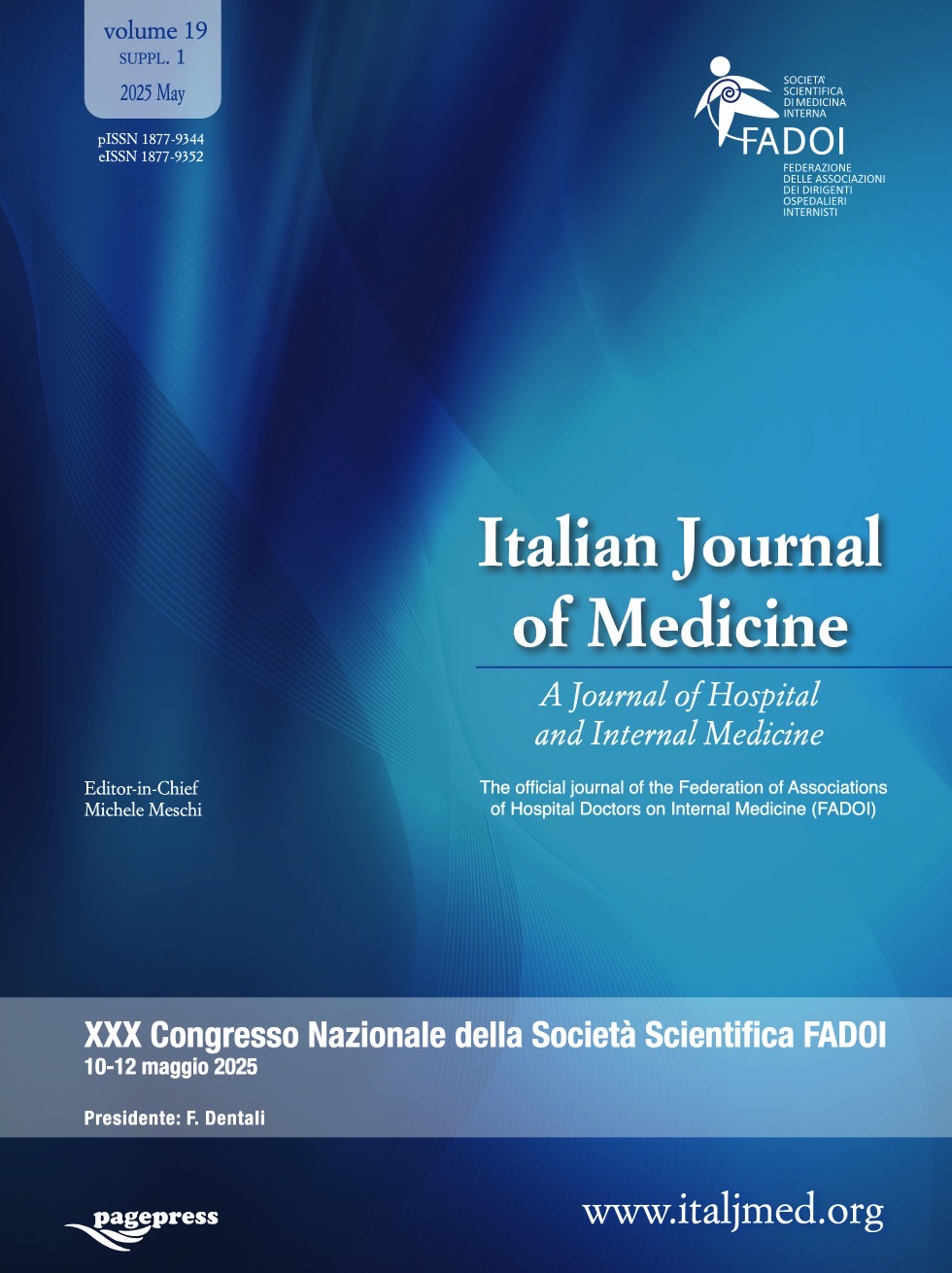XXX FADOI Italian Congress | 10-12 May 2025
25 August 2025
Vol. 19 No. 1(s1) (2025): XXX FADOI Italian Congress | 10-12 May 2025
P22 | Granulomatosis with polyangiitis: plasmapheresis as a method to reduce permanent renal failure and incidence of side effects of rituxibab
V. Bosco1, F. Mauceri1, V. Nicotra2, P. Gargano1, M. Carbone1, M. Romano1, S. Urso3 | 1Department of Clinical and Experimental Medicine, University of Catania, Garibaldi Hospital, Catania, 2Geriatric Department, Garibaldi-Nesima Hospital, Catania, 3UOSD Nephrology, Garibaldi-Nesima Hospital, Catania, Italy
Publisher's note
All claims expressed in this article are solely those of the authors and do not necessarily represent those of their affiliated organizations, or those of the publisher, the editors and the reviewers. Any product that may be evaluated in this article or claim that may be made by its manufacturer is not guaranteed or endorsed by the publisher.
All claims expressed in this article are solely those of the authors and do not necessarily represent those of their affiliated organizations, or those of the publisher, the editors and the reviewers. Any product that may be evaluated in this article or claim that may be made by its manufacturer is not guaranteed or endorsed by the publisher.
57
Views
0
Downloads







